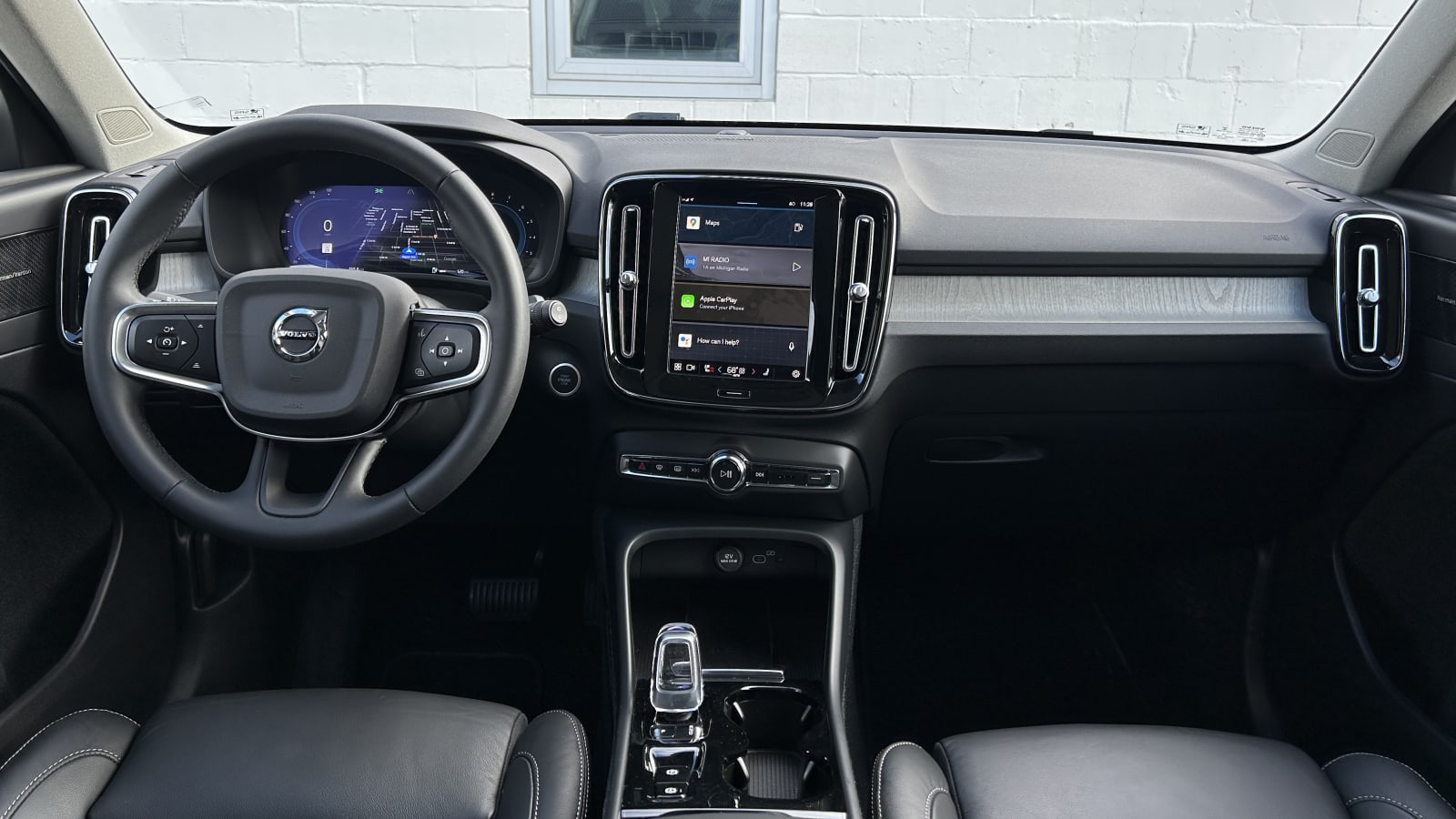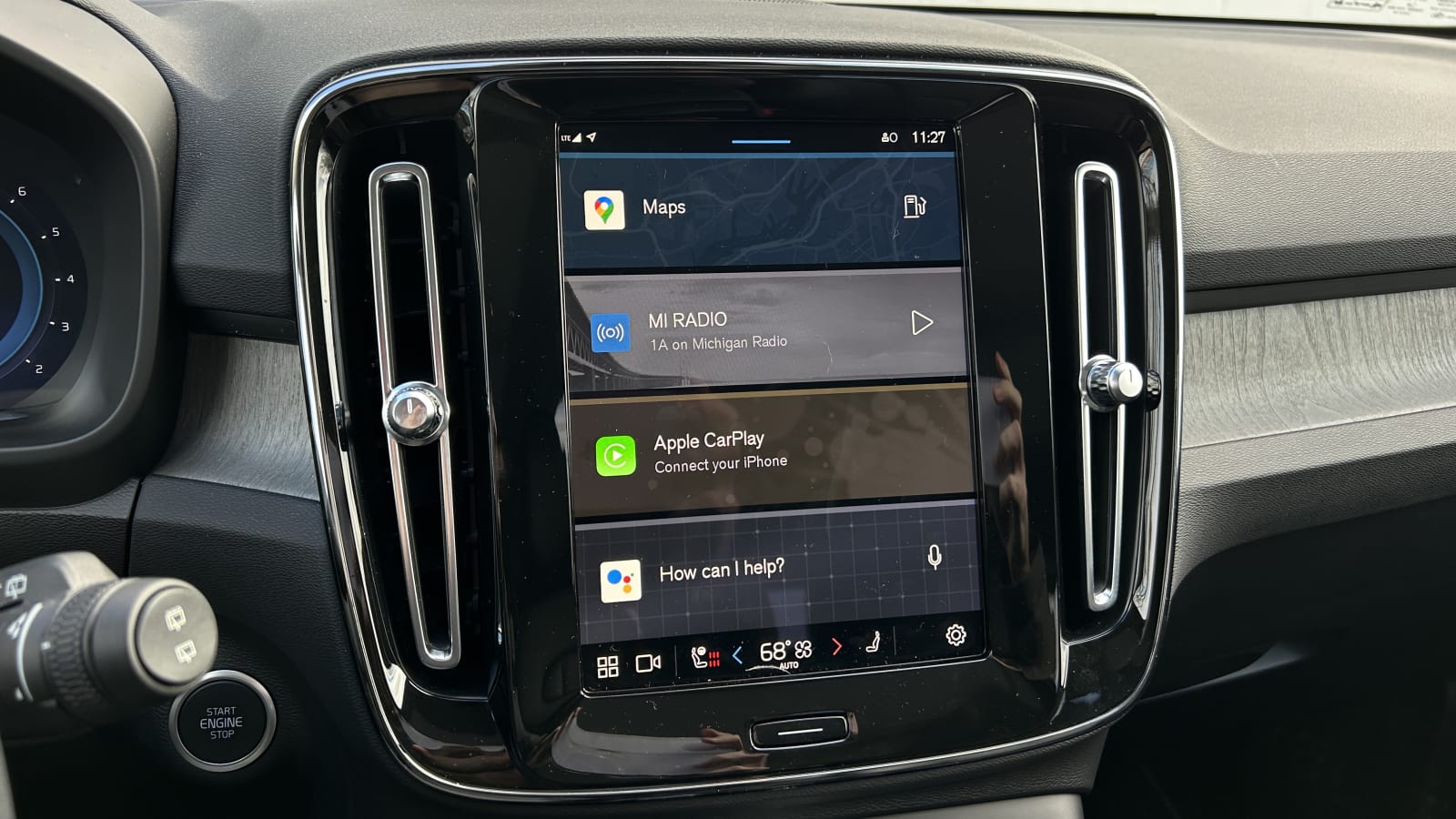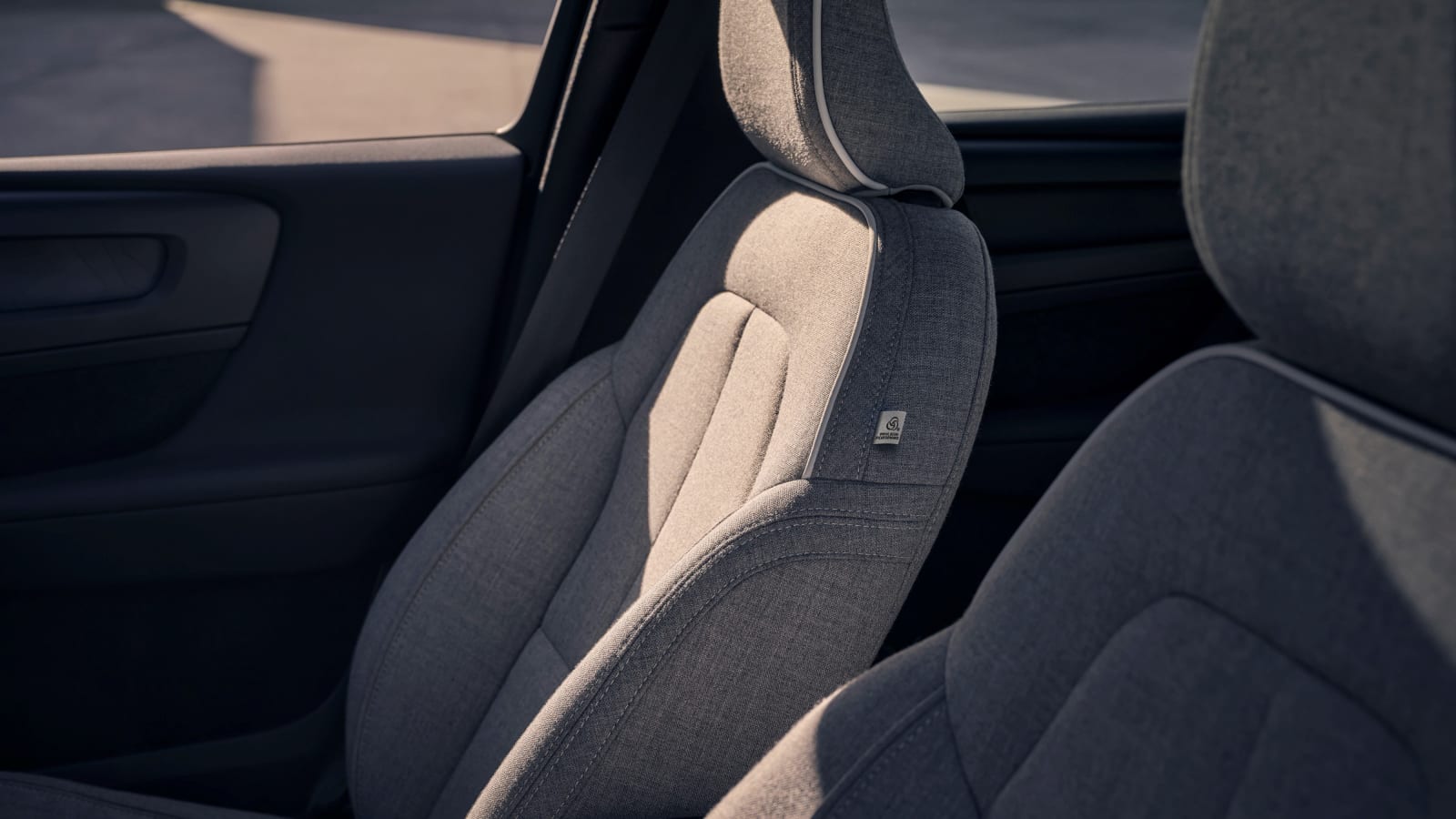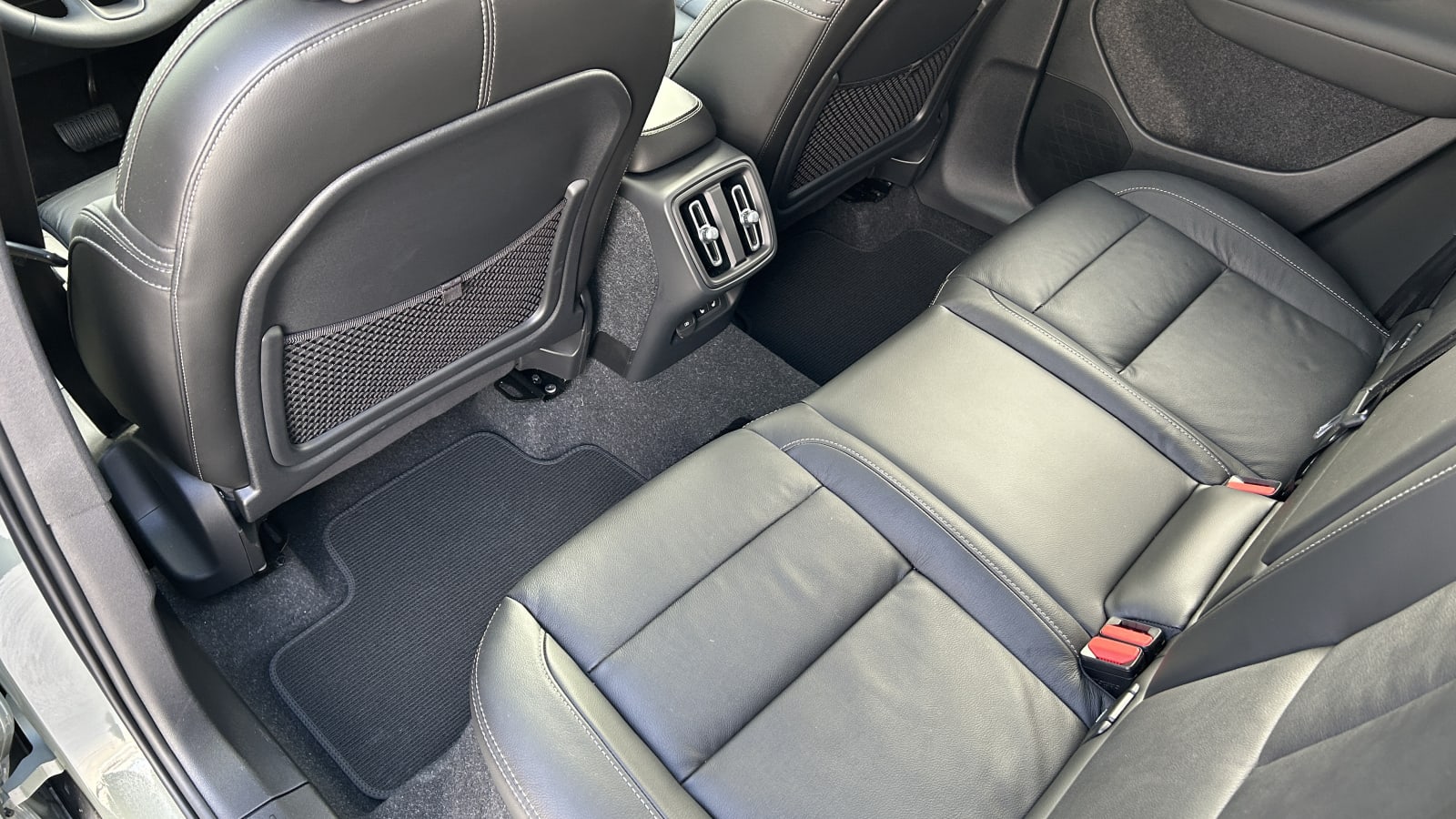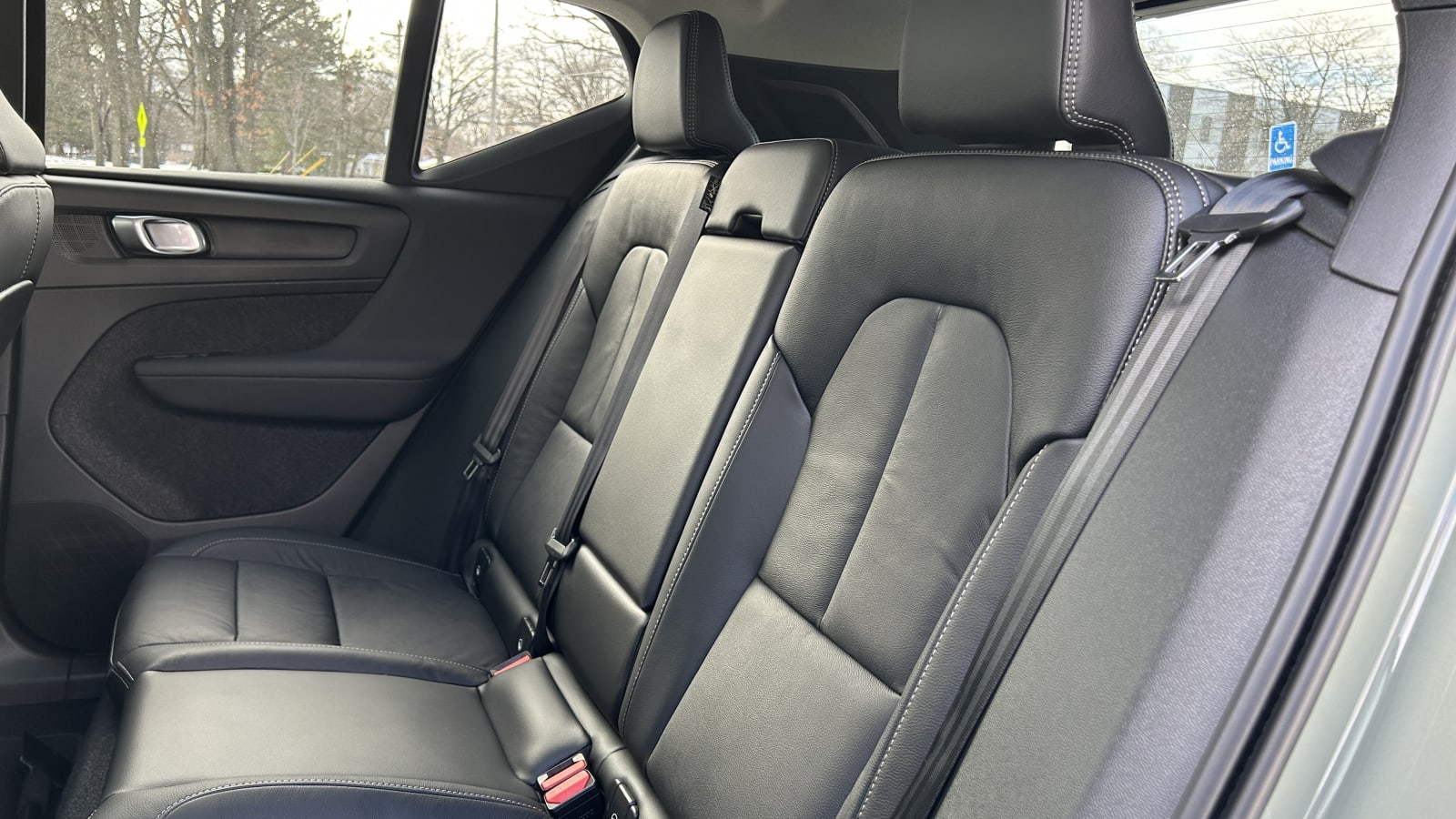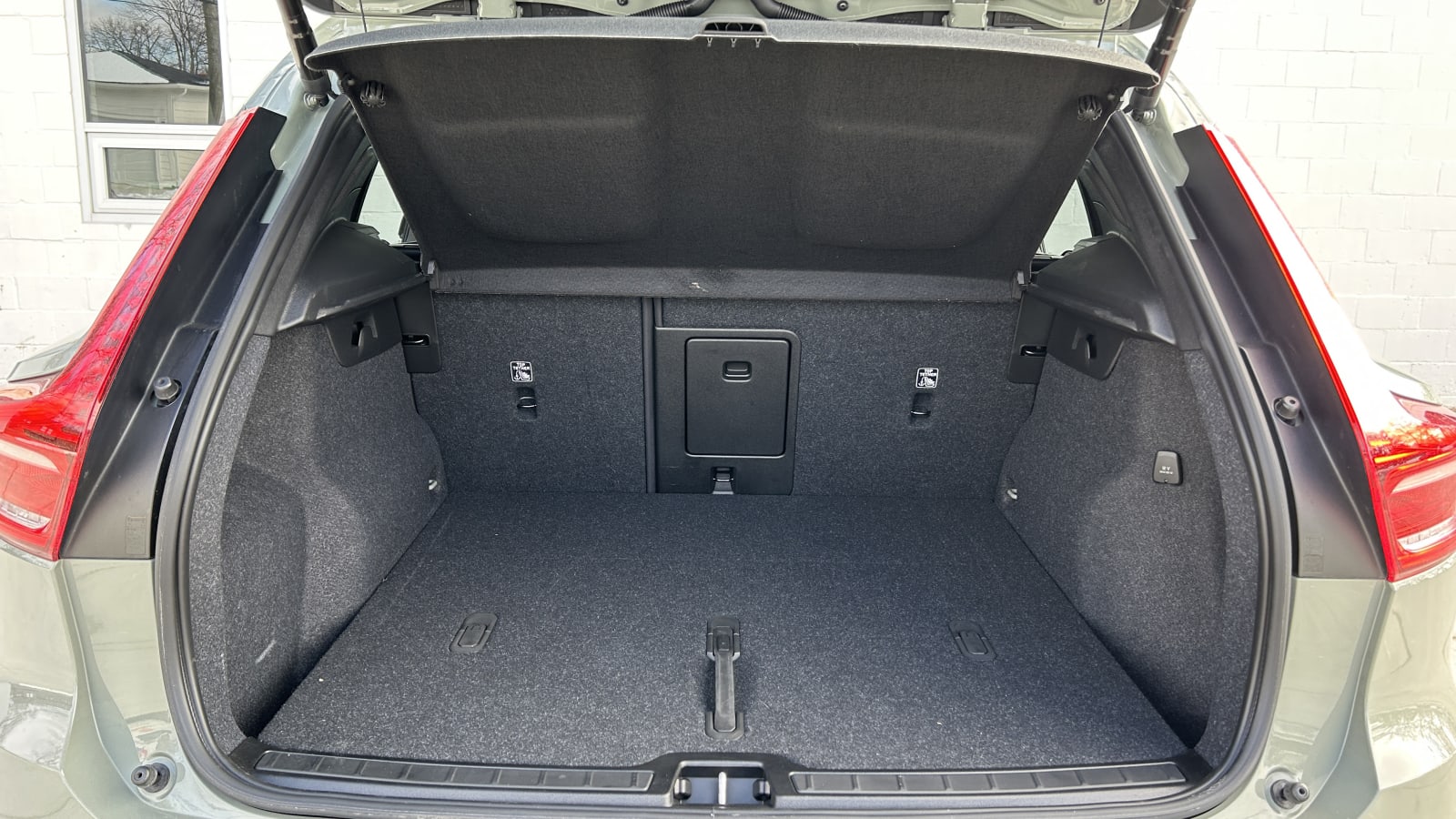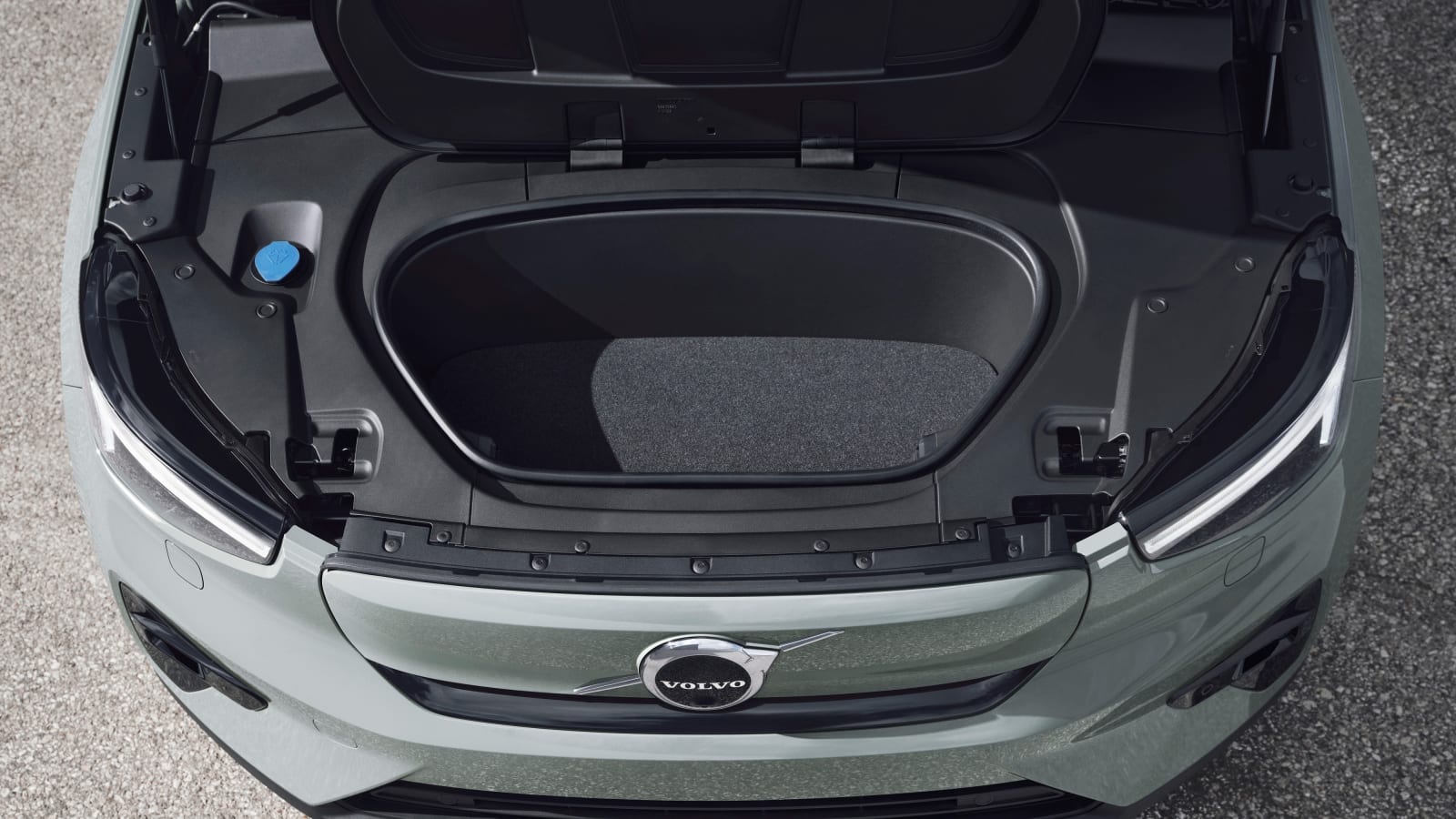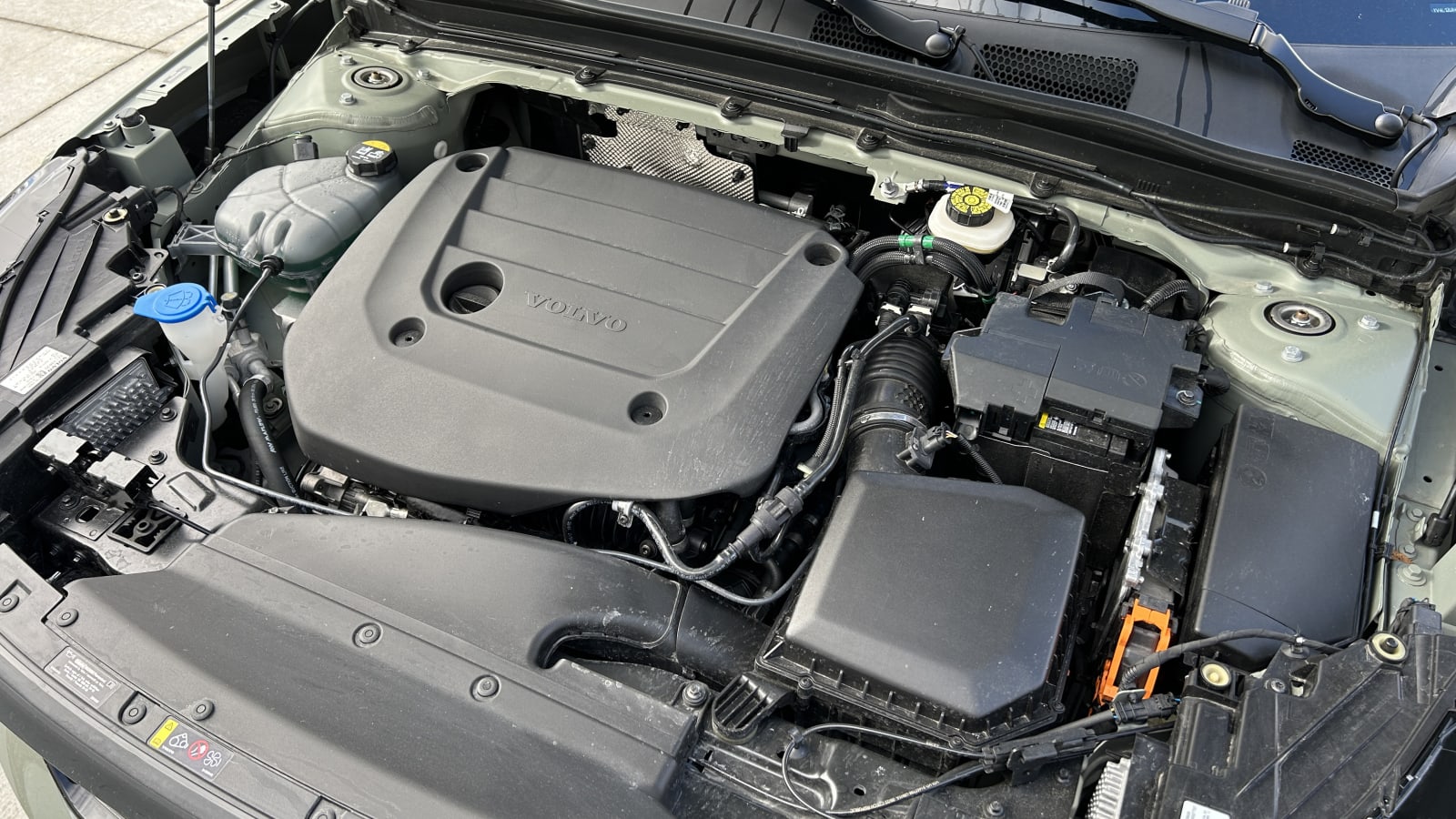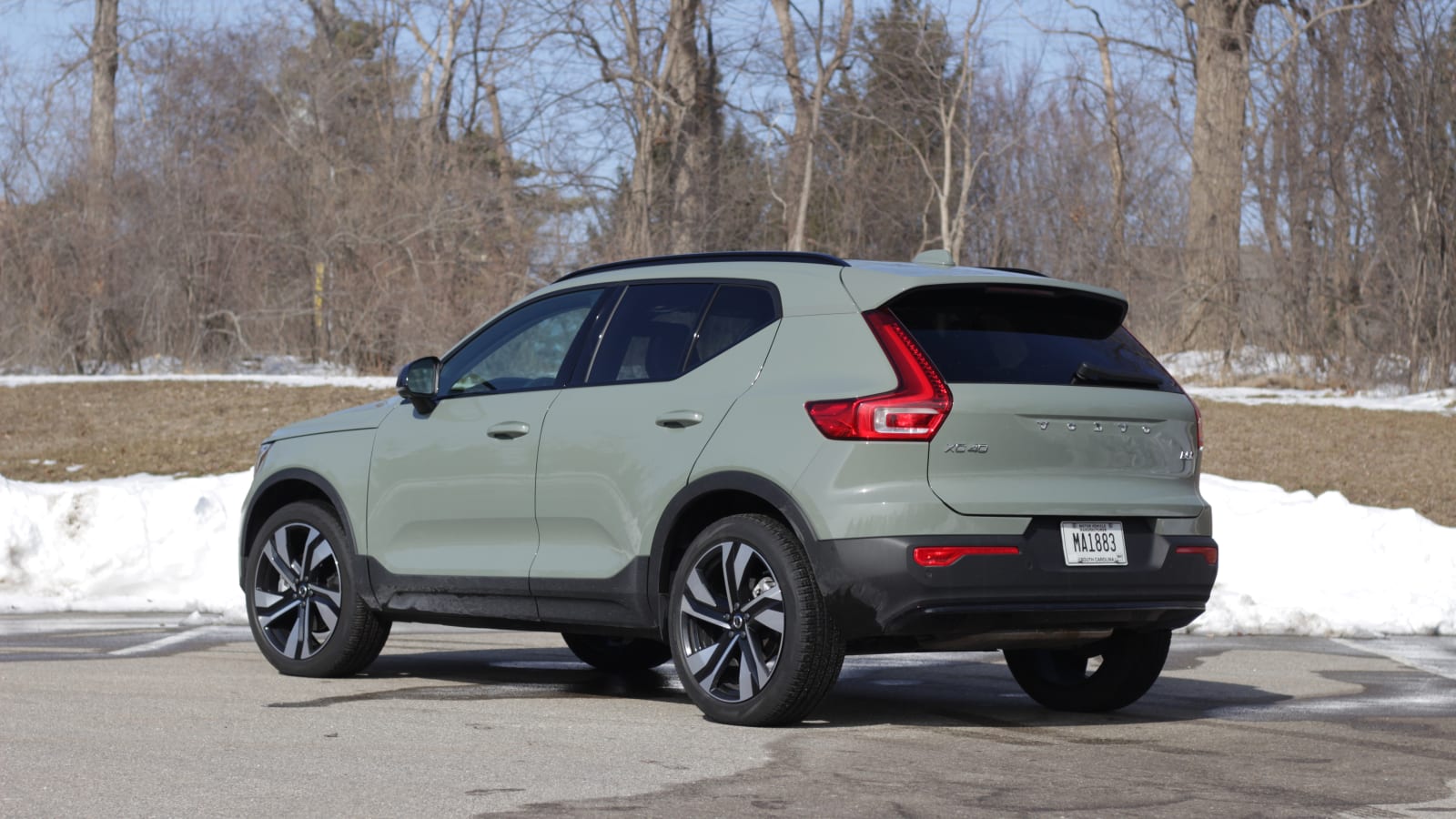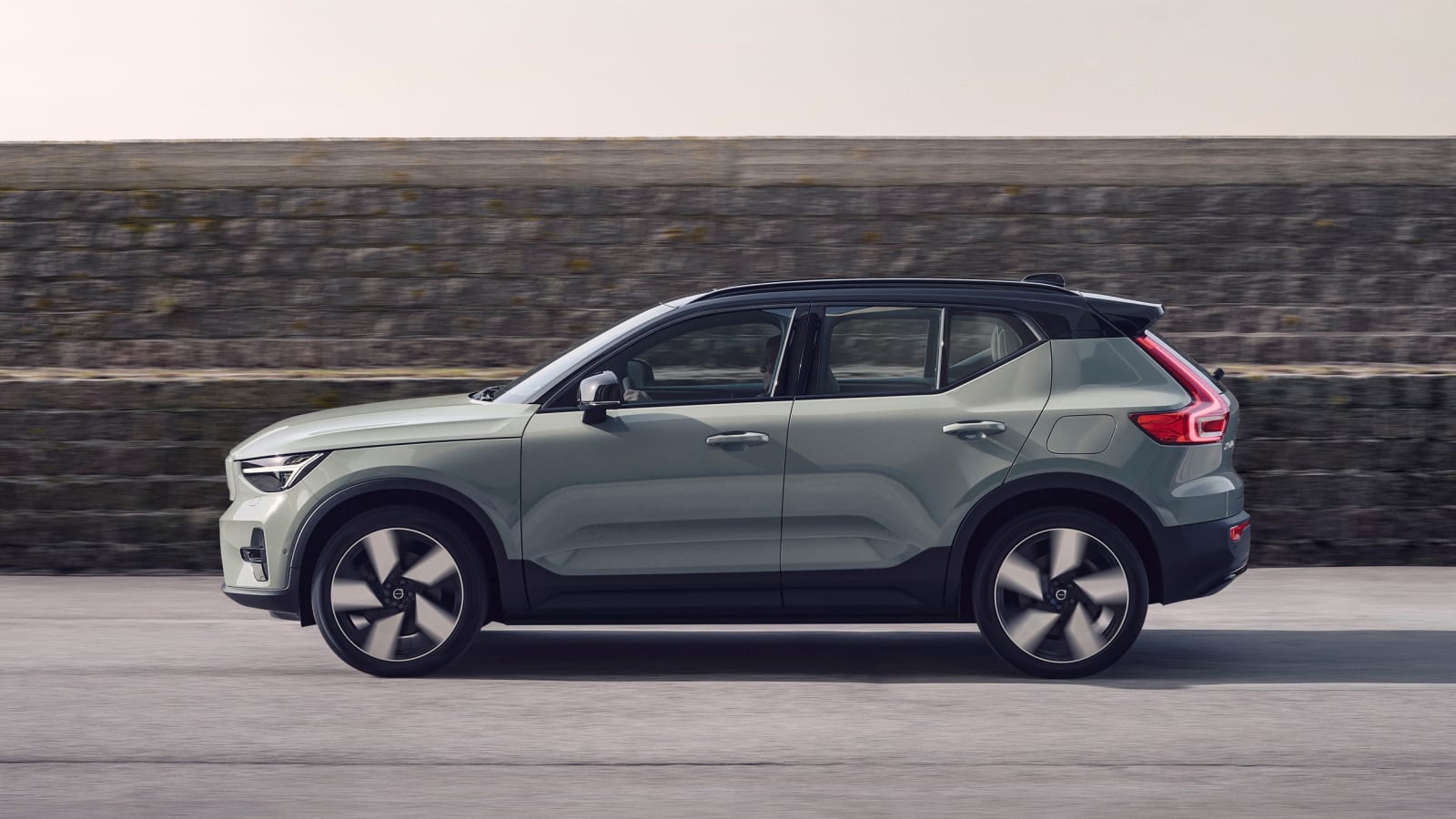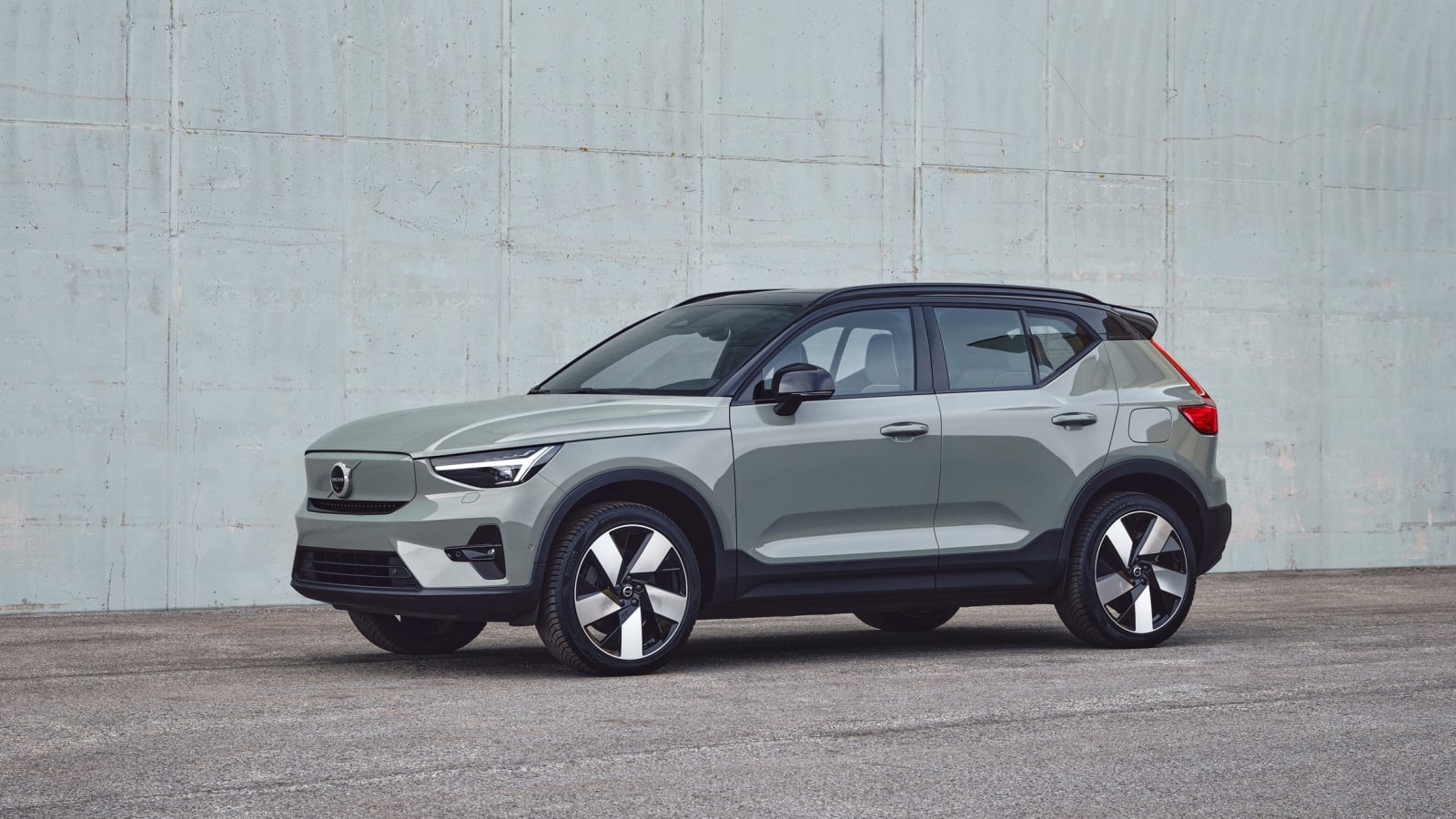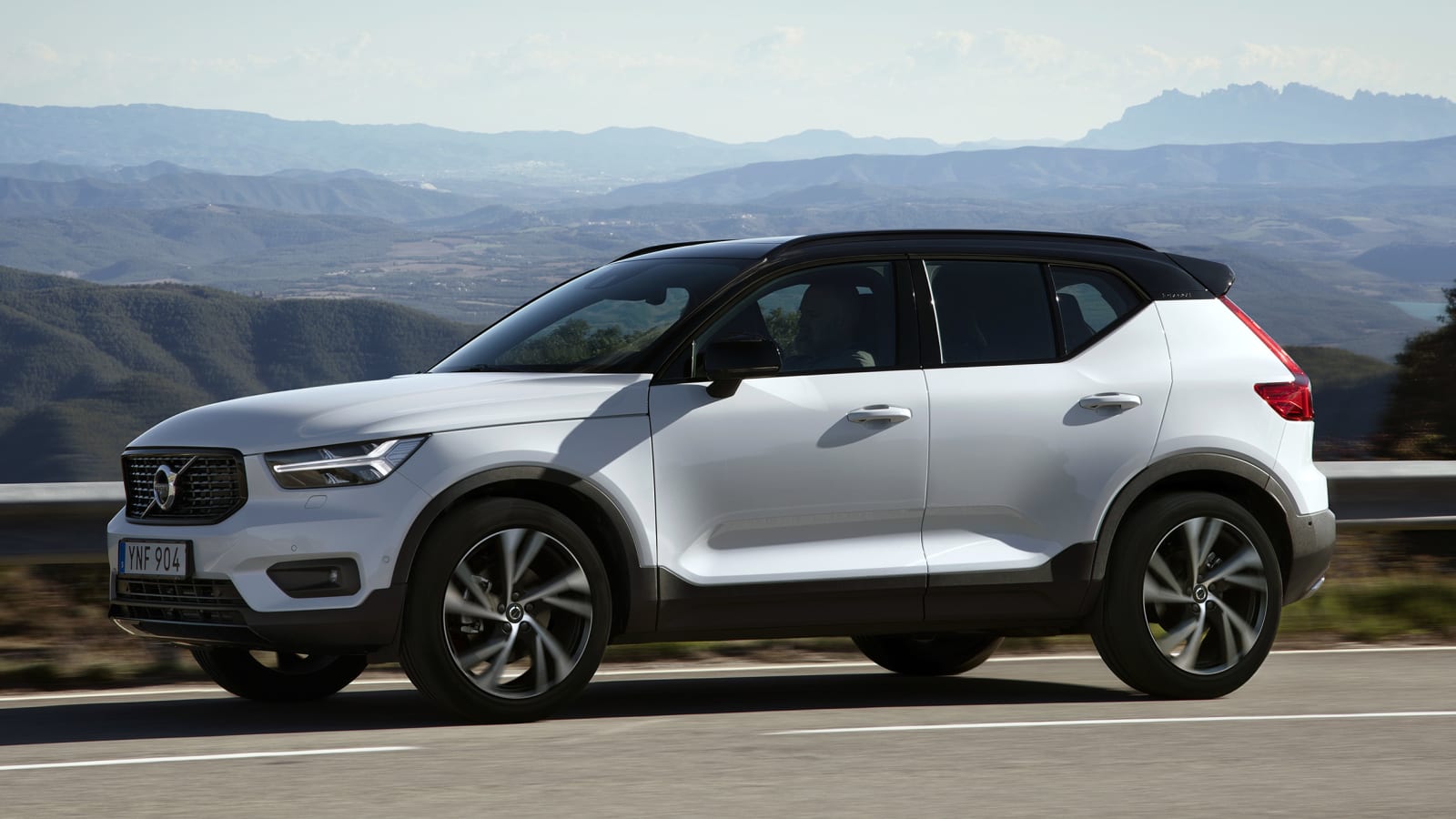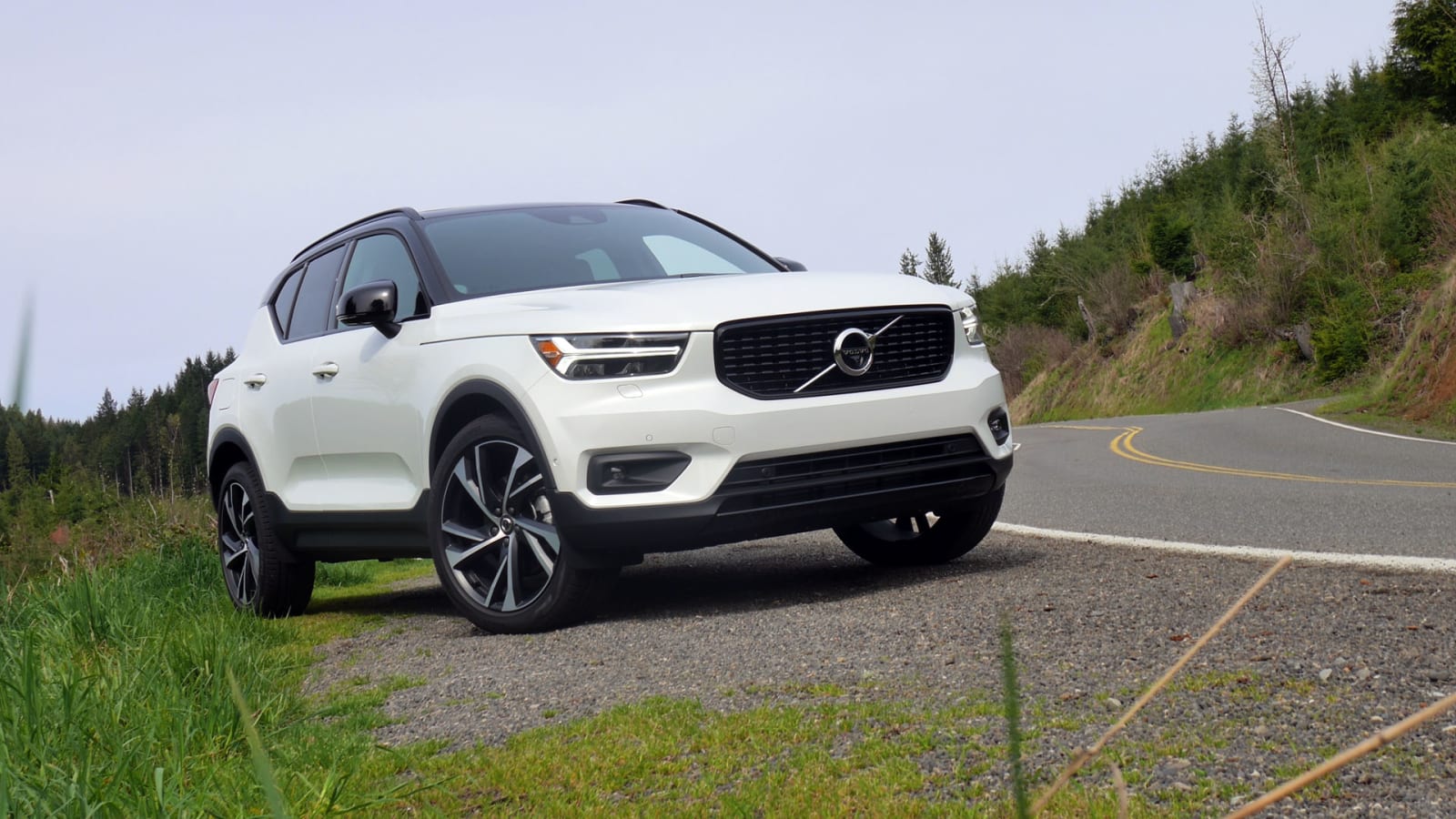Pros: Cute and functional design; efficient powertrains; a good overall value
Cons: Recycled materials can feel cheap; Recharge has average EV range; doesn’t qualify for federal EV tax credit
The 2023 Volvo XC40 is arguably the most visually attractive subcompact luxury SUV out there. It’s boxy, proportioned well and features the trademark Swedish design we love. Volvo prodded this year’s XC40 with a number of updates, and now the previously ho-hum powertrains are a little nicer to live with (if hardly zesty in their performance). Of course, you can bypass them altogether with the all-electric XC40 Recharge that shares its design, interior features and utility with the gas model, but really amps up the fun with sprightly acceleration and better handling. Oh, and of course, doesn’t require stops at the gas station or emit CO2.
While the XC40 isn’t the biggest in the segment, it’s not the smallest either. This, plus its utilitarian proportions make it more useful than it may look on the outside. Fans of Google tech will enjoy the Google-based infotainment system, but you can still use Apple CarPlay for streaming apps from the Apple ecosystem. All told, the XC40 is one of our favorite subcompact luxury SUVs, and indeed, one of the few we recommend. It has the size, style and quality that justifies its higher price over various non-luxury entries. Plus, the gasoline versions, particularly the upgraded B5, provide stronger value than its various competitors. Even the electric Recharge, which carries a steep price increase, at least provides a strong performance upgrade for the money.
Interior & Technology | Passenger & Cargo Space | Performance & Fuel Economy
What it’s like to drive | Pricing & Trim Levels | Crash Ratings & Safety Features
What’s new for 2023?
The XC40 lineup, including the XC40 Recharge, get a mild refresh for 2023. Small styling changes include a new front bumper, frameless grille and “pixel” LED headlight technology. New colors and wheels come into the fold, too.
Both of the gasoline-powered XC40s gain 48-volt mild-hybrid systems to aid efficiency. Inside, Volvo adds non-leather upholstery to the Recharge, and all models adopt the Google-based infotainment system that was previously a Recharge exclusive.
What are the XC40’s interior and in-car technology like?
Volvo’s interiors are very tidy and architectural in terms of design, and the XC40 is no exception even if its specific design doesn’t exactly mimic other models. It’s pleasingly simple, using comfortable, quality materials and Swedish design as its foundation. Textile upholstery is standard, while luxurious leather is available. Plus, the XC40 Recharge offers non-leather greener alternatives such as Volvo’s “Microtech” textile or a wool blend (above, bottom right).
Besides its design, one of the ways the XC40 differs from its siblings (and its competitors) is its clever center console design. It features numerous large, grippy bins to store, secure and charge devices, plus useful cupholders and a sizable under-armrest bin. There’s even a little compartment specifically designed to act as a garbage can. Clearly, lots of care and thought went into the XC40.
There’s a lot of tech baked right in, too, from the standard 9-inch vertically oriented Google-based infotainment screen to the 12-inch digital instrument panel. We appreciate the embracing of technology, and even if you don’t want to go all-in on the Google apps, Apple CarPlay works just as well with this infotainment system. That said, utilizing native Google Maps (it even displays in the cluster) as the navigation system and Google Assistant for voice commands make this infotainment system feel more like an extension of the smartphone than any others out there.
How big is the XC40?
The back seat is a little small for larger adults, but that comes with the territory for most in this segment. The XC40 falls into the smallest subcompact luxury crossover category where it faces both smaller and larger rivals — the larger ones being the BMW X1 and Mercedes-Benz GLB. Even if it is only medium-sized in its segment, the XC40’s boxy shape and well-thought-out ergonomics make it rather utilitarian. Rear headroom is plentiful. We also found it easy to install a child car seat, though there isn’t a lot of room for said children to swing about once installed.
The XC40’s cargo space behind the second row is on the small side, but the area is tall, and it’s easy to load items into the large opening. Volvo gets creative with the floor, too, as you can lift it up and arrange it to create separate sections to keep items from falling into one another. Maximum cargo capacity is 57.5 cubic feet, which is bigger than nearly all of its competitors. The Mercedes GLB is most notable for being able to carry more stuff. If you opt for the Recharge, there’s a small frunk available for additional storage (seen above, bottom right).
What are the XC40’s fuel economy and performance specs?
There are three powertrains available for the 2023 XC40: the B4, B5 and Recharge.
The XC40 B4 features a 2.0-liter mild-hybrid turbocharged four-cylinder, and is only available with front-wheel drive. It makes 194 horsepower and 221 pound-feet of torque. Though not as peppy as the B5, it offers excellent fuel economy: 24 mpg city, 32 mpg highway and 27 mpg combined. Volvo says it’ll go from zero to 60 mph in 8.1 seconds, which is on the slow side for a luxury vehicle.
To get all-wheel drive, you have to step up to the XC40 B5. It also has a 2.0-liter turbocharged four-cylinder, but it produces 247 hp and 258 lb-ft of torque. The fuel economy penalty for the extra power and all-wheel drive is negligible at 23 mpg city, 30 highway and 26 combined. This engine hacks off a full 2 seconds from the 0-60 time, which is something you’ll definitely notice.
The XC40 Recharge has a 78 kilowatt-hour battery pack and one identical electric motor on each axle to provide all-wheel drive. It produces 402 hp and 486 lb-ft of torque, which is as much of a massive performance upgrade as it seems – the 0-60 time plummets to 4.7 seconds. Its EPA-estimated range is 223 miles. Maximum charging speed is 150 kW on an applicable DC fast charger, which Volvo says is good enough to go from a 10-80% charge in 37 minutes.
What’s the XC40 like to drive?
The XC40 breaks from the Volvo 60 and 90 series norm – it still feels competent and stable, yet there’s more of a pluckiness present. It feels playful and light on its feet, and although the steering is on the numb side, it’s precise and appropriately weighted. Yet, paradoxically, the XC40 is also quite tall and narrow, resulting in more body roll than usual and a notably high seating position. It feels a bit classically SUV-like in this regard, especially when compared to overtly car-like entries like the BMW X2 and Mercedes GLA. In total, the driving experience is a bit unusual – some of our editors disliked it, others found it charming. Either way, the XC40 is certainly not boring.
After driving multiple versions of the gas-powered XC40, we’ve found that ride comfort depends greatly on the options boxes checked, most notably wheel sizes. It’s generally on the firm side, but “firm” can easily transition into “unpleasant” depending on your specification and the road surfaces at hand.
The same goes for the engine. While the B4 is more than capable, the B5 with its 247 horsepower and 258 pound-feet of torque can properly move out. It’ll go from zero to 60 in just 6.1 seconds versus the B4’s pokey 8.1-second run. When taking it easier, both the B4 and B5 mild-hybrids keep stops and starts smooth, aiding with a touch of electric boost when initially taking off.
Driving an XC40 Recharge (directly above) is extremely different from the gas-powered one, mostly because the EV is rocking 228 more pound-feet of torque than even the B5 gas variant. The instant torque from the electric motors means right-away throttle response, and overall acceleration is not only vastly superior to the B5, but is quicker than non-luxury EVs like the Kia EV6, Hyundai Ioniq 5 and Ford Mustang Mach-E. This makes the XC40 Recharge legitimately entertaining to drive in every scenario. The Recharge even handles better than the gas-powered version, too. Much of the sensation of roll and SUV-like qualities disappear with the big battery pack pushing the center of gravity downward. It still isn’t a performance vehicle, but the XC40 Recharge is surprisingly fun to drive.
What other XC40 reviews can I read?
2023 Volvo XC40 Recharge First Drive Review: EV SUV is petite, potent and unpretentious
Our first drive review of the all-electric XC40 Recharge model.
2018 Volvo XC40 First Drive Review: The Masspirational crossover
The XC40 launched as a 2018 model here in the U.S., and here’s our first impressions review.
2019 Volvo XC40 Drivers’ Notes Review | Style on a smaller scale
The staff gets behind the wheel of an XC40 on our home turf and provide their review thoughts.
What is the 2023 XC40’s price?
Pricing starts at $37,645, including the destination charge for the 2023 XC40 B4 FWD Core model. The B5 starts at only $2,000 more, which is actually a bargain considering you get both all-wheel drive and significantly improved performance. Three trims are available: Core, Plus and Ultimate.
Standard equipment for the Core is generous for a subcompact SUV, and it includes 18-inch wheels, a power liftgate, rear parking sensors, automatic wipers, power-folding mirrors, auto-dimming mirrors (all), automatic climate control, power driver seat with memory functions, heated front seats, textile upholstery and an eight-speaker sound system.
Step up to the Plus, and Volvo pitches in fog lights, proximity entry, front parking sensors, a panoramic sunroof, aluminum interior trim, more ambient lighting, a power passenger seat, cushion extensions on both front seats, power-folding rear headrests and a power outlet in the cargo area. Pay the big bucks for the Ultimate, and you get 19-inch wheels, a Harman Kardon audio system and a bunch of driver assistance features we’ll detail in the next section.
The Recharge is comparable to the gas-powered XC40 in feature content and is also available in Core, Plus and Ultimate trims. One notable option you’ll likely want on the Recharge is the “Climate” package that adds a heat pump (among other niceties) to greatly extend range in cold weather driving. The XC40 Recharge starts at $54,645.
XC40 B4 Core: $37,645
XC40 B4 Plus: $42,045
XC40 B4 Ultimate: $45,795
XC40 B5 Core: $39,645
XC40 B5 Plus: $44,045
XC40 B5 Ultimate: $47,795
XC40 Recharge Core: $54,645
XC40 Recharge Plus: $57,345
XC40 Recharge Ultimate: $60,595
What are the XC40’s safety ratings and driver assistance features?
Standard safety equipment on the 2023 Volvo XC40 includes front and rear collision warning, automatic emergency braking, blind-spot warning, rear cross-traffic alert, oncoming lane mitigation (steers you back to lane to avoid head-on collision), a driver inattention and drowsiness warning system, lane-keeping assist and road sign information. Other safety systems that come standard on the Ultimate trim include adaptive cruise control with lane centering steering assist and stop-and-go functionality, and a 360-degree camera.
The National Highway Traffic Safety Administration gave the XC40 five out of five stars for overall, frontal and side crash protection. The Insurance Institute for Highway Safety gave it “Good” ratings for every test but its 2023 updated “side” crash test where it earned an “Acceptable” rating. This knocked the XC40 out of Top Safety Pick contention.
Related video:


